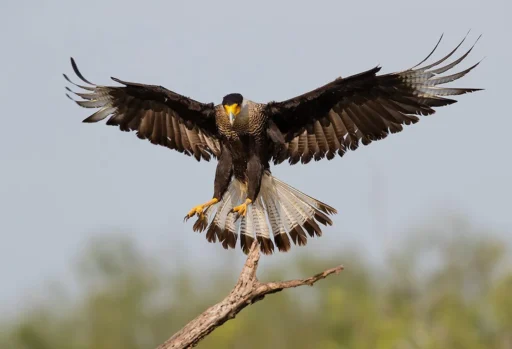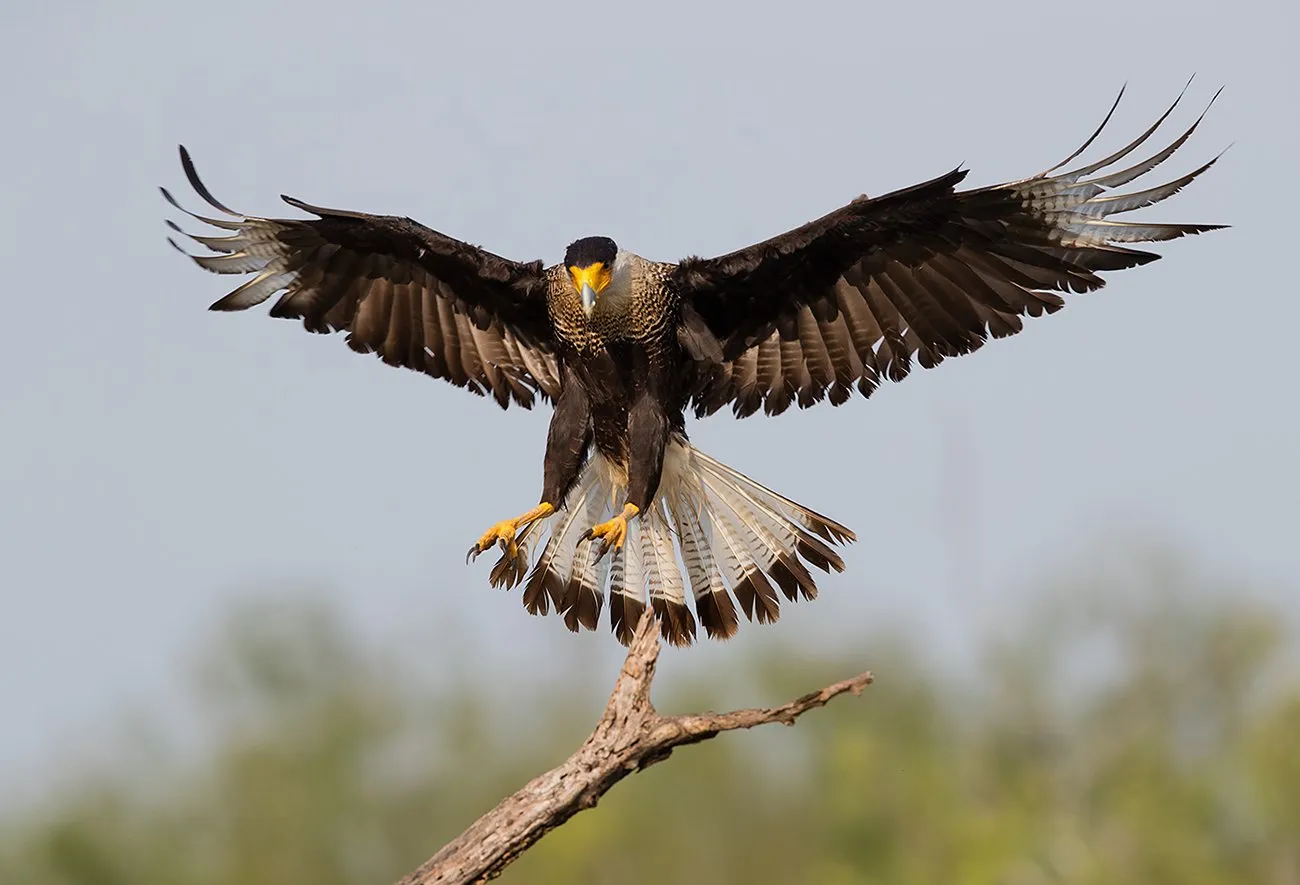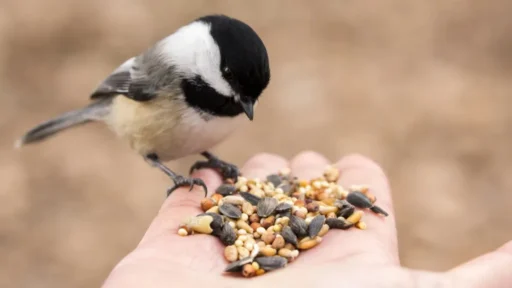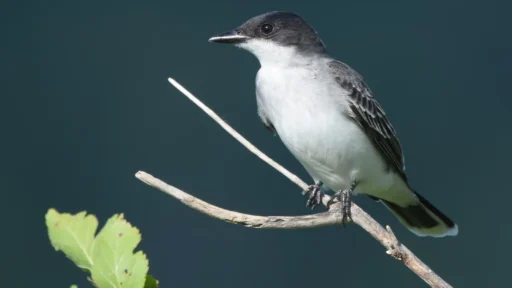Beneath the vast Texan skies, where the landscapes unfurl in a tapestry of deserts, forests, mountains, and coastal plains, the raptors reign supreme. These winged predators—majestic eagles, swift falcons, and enigmatic owls—paint the skies with power, speed, and grace. For birdwatchers and nature enthusiasts, understanding and identifying these avian predators isn’t just a pastime; it’s an art. Prepare for a journey through the mystique of the raptors of Texas, equipped with knowledge and a sharper eye.
Table of Contents
- Raptors Unveiled: Masters of the Sky
- The Ecological Diversity of Texas Raptors
- Cracking the Code: How to Identify Raptors
- The Raptors of Texas: A Field Guide
- Spotting Raptors: Where and When
- Aerial Acrobatics: Raptors in Flight
- Why Raptors Matter: Ecological Guardians
- Mastering Raptor Watching: Tools and Resources
- Overcoming Challenges in Identification
- FAQs
Raptors Unveiled: Masters of the Sky
Raptors, known scientifically as birds of prey, stand out for their extraordinary predatory adaptations: talons that strike like daggers, curved beaks designed for tearing flesh, and vision so acute it borders on the supernatural. These aerial titans hold a pivotal ecological role, controlling prey populations and ensuring environmental balance.
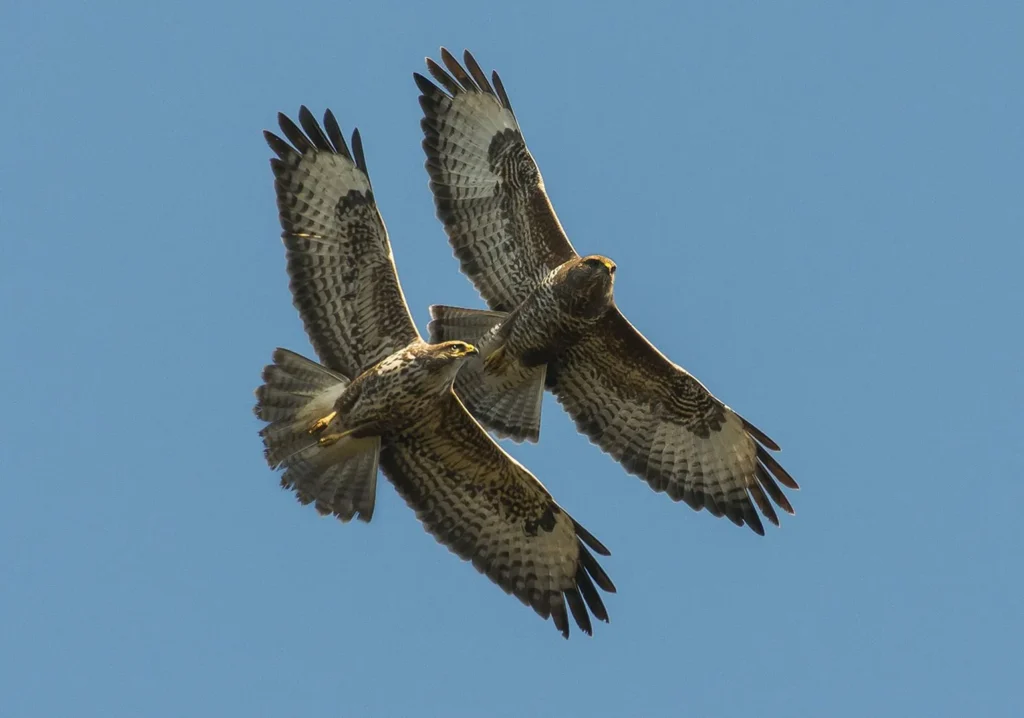
What Defines a Raptor?
Raptors possess:
- Sharp Talons: For grasping and immobilizing prey.
- Hooked Beaks: Perfectly evolved for slicing through meat.
- Keen Vision: Can detect a mouse in a field from dizzying heights.
Their hunting prowess sets them apart from other bird species, cementing their status as apex aerial predators.
The Ecological Diversity of Texas Raptors
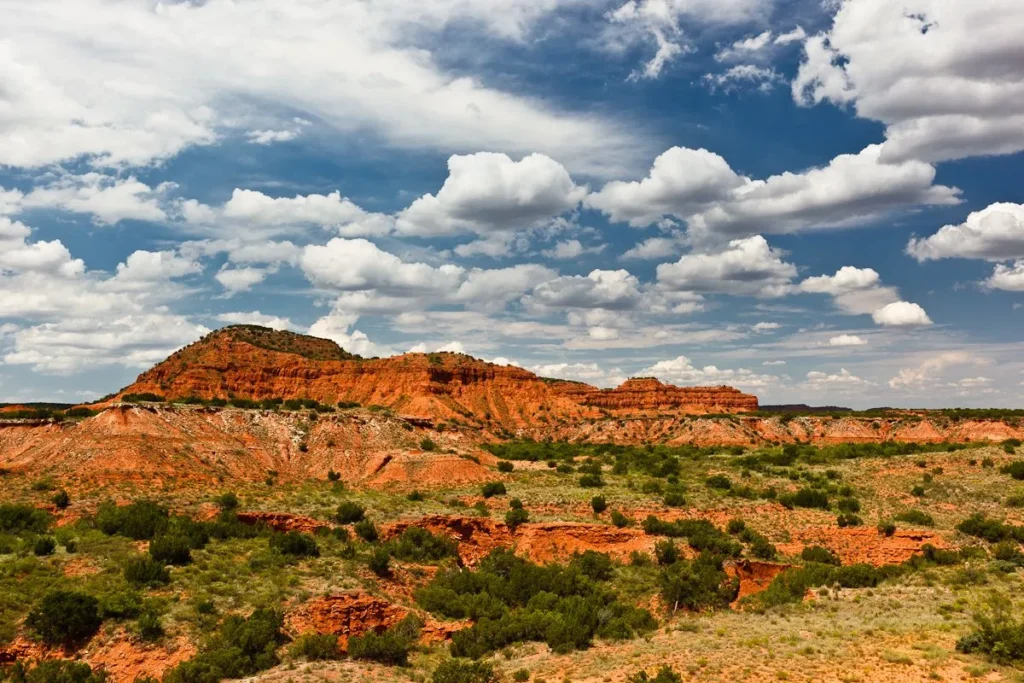
The Lone Star State, with its sprawling geography, is a haven for raptors. Each ecosystem within Texas shelters distinct species, creating unparalleled birdwatching opportunities. Here’s a breakdown of key habitats and the raptors they attract:
- Coastal Plains: A playground for ospreys and other piscivorous raptors.
- Forests: Home to the haunting calls of barred owls and the cries of red-shouldered hawks.
- Prairies and Open Grasslands: Stalking grounds for northern harriers, known for their low gliding flight, and ferruginous hawks.
- Mountainous Regions: The rugged terrain invites golden eagles and peregrine falcons.
With its ecological variety, Texas offers a dynamic stage for these avian performers.
Cracking the Code: How to Identify Raptors
Raptors are often tricky to identify, especially in the wild. But with some key observations, you can become adept at distinguishing one species from another.
Key Features to Observe
Wingspan and Flight Behavior:
- Eagles: Broad, expansive wings ideal for soaring.
- Falcons: Sleek, pointed wings optimized for speed.
Tail Shape:
- Hawks: Rounded tails.
- Kites: Forked tails.
Plumage and Markings:
- Red-tailed hawk: A vivid reddish tail contrasts with its mottled body.
- Bald eagle: Its iconic white head and tail against a dark brown body.
Size and Posture:
- Cooper’s hawk: Compact and agile, often perched in woodlands.
- Ferruginous hawk: Large and stocky with pale plumage.
Training your eye to catch these details is essential for accurate identification.
The Raptors of Texas: A Field Guide
1. Red-Tailed Hawk
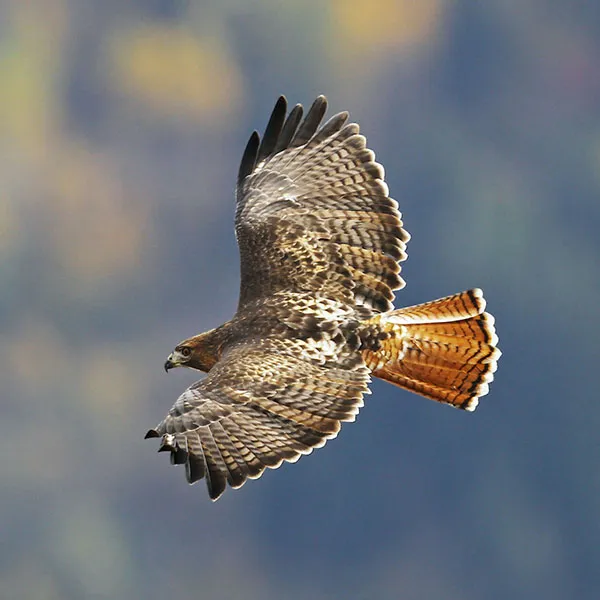
Perhaps the most common raptor in Texas, the red-tailed hawk is a quintessential predator. Its adaptability allows it to thrive in forests, grasslands, and even urban areas.
- Wingspan: Up to 4.5 feet.
- Plumage: Mottled brown with a distinctive reddish tail.
- Behavior: Soars in wide circles, often emitting a piercing screech.
2. Bald Eagle
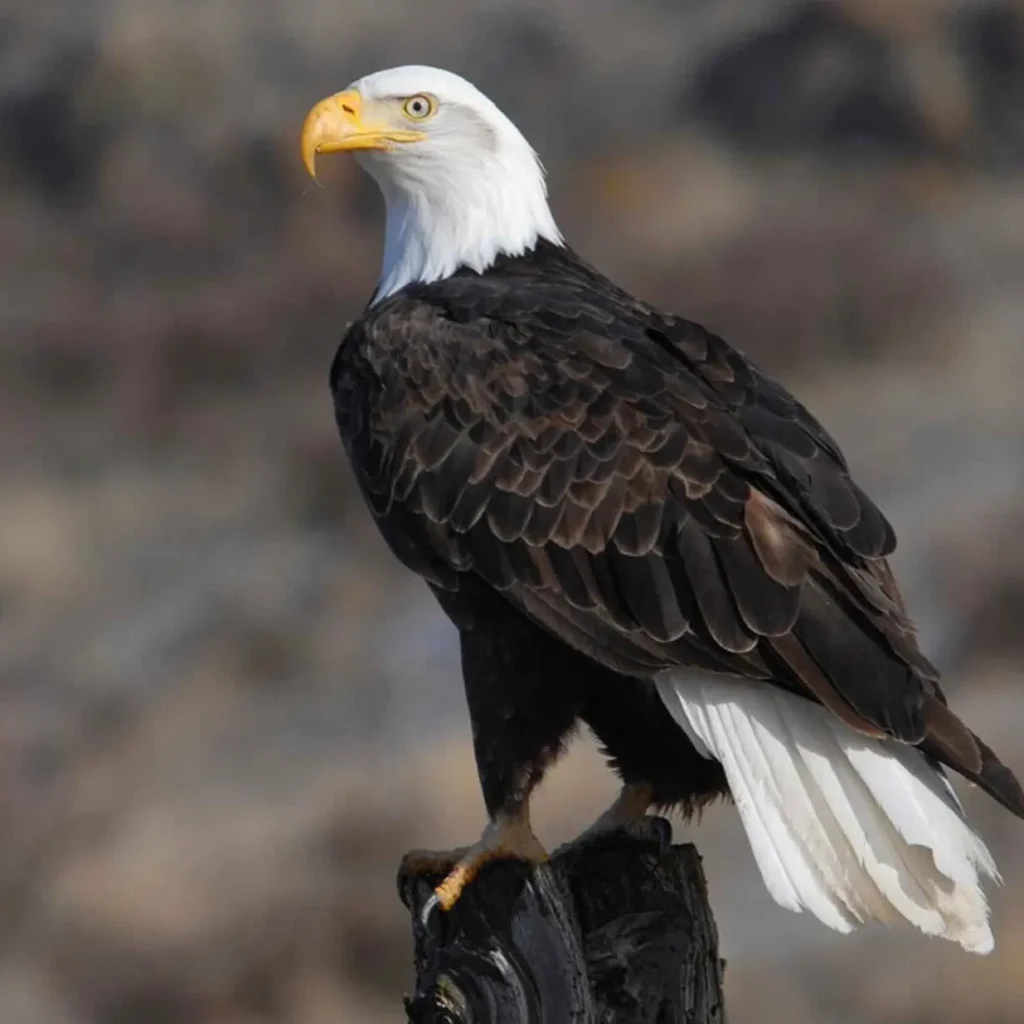
A symbol of freedom and strength, bald eagles grace Texas skies during their migratory periods.
- Wingspan: An impressive 6 to 7.5 feet.
- Appearance: White head and tail with a robust yellow beak.
- Habitat: Found near water bodies, where fish are abundant.
3. American Kestrel
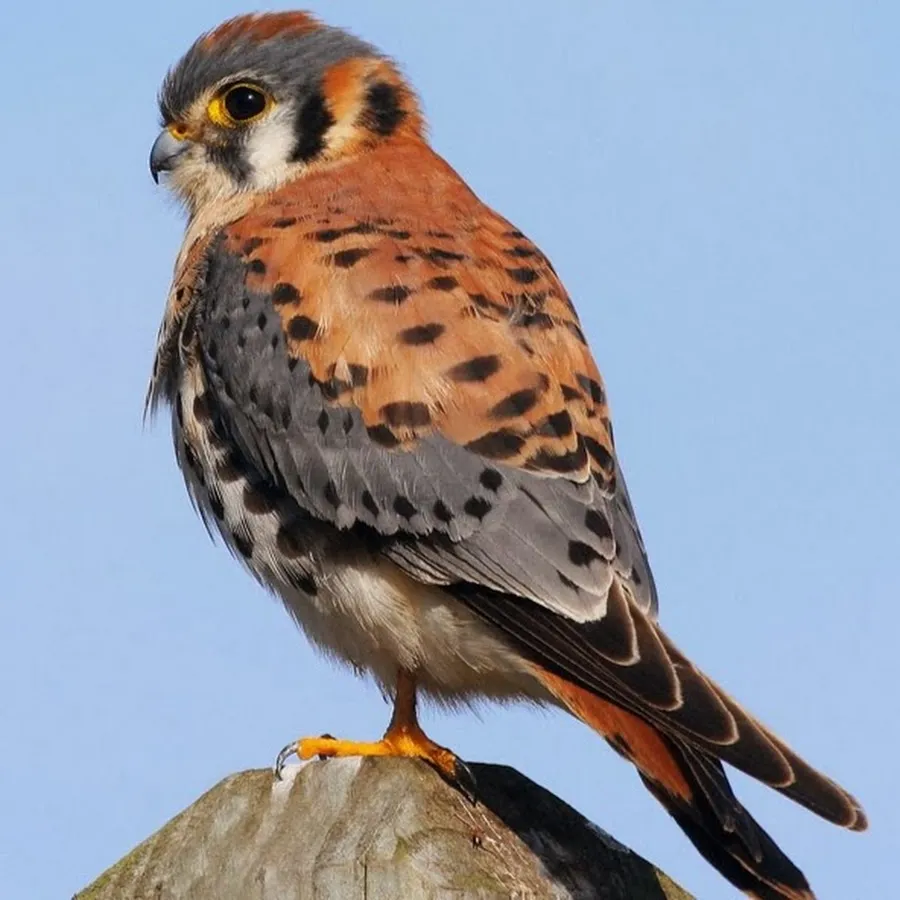
The smallest falcon in North America, the American kestrel, compensates for its diminutive size with striking colors and agile hunting tactics.
- Wingspan: 2 feet.
- Plumage: Blue-gray wings paired with a reddish back.
- Behavior: Known for hovering mid-air before diving for prey.
4. Cooper’s Hawk
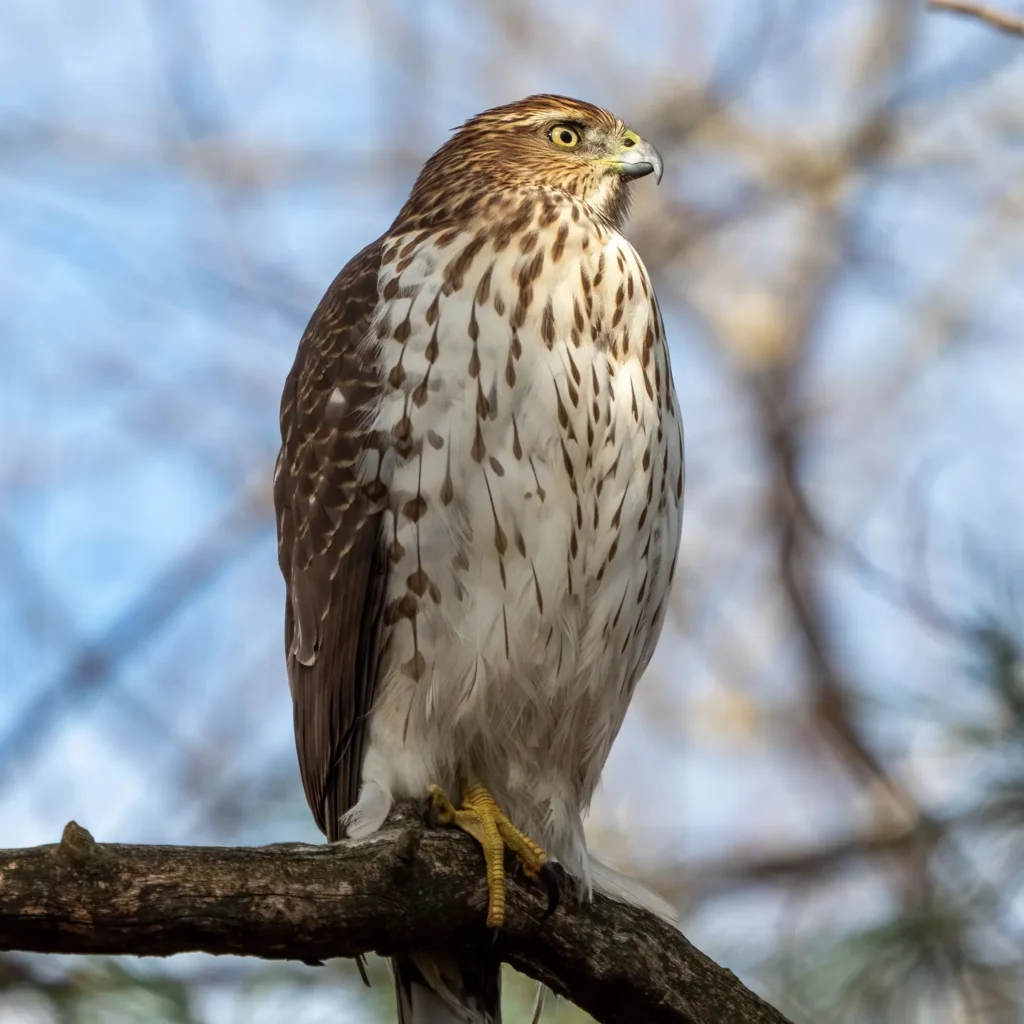
This forest-dwelling raptor is a stealthy predator, often spotted chasing small birds through dense canopies.
- Wingspan: About 3 feet.
- Plumage: Bluish-gray back with a striped chest.
- Behavior: Quick, darting flights through wooded areas.
Spotting Raptors: Where and When
Maximize your chances of observing raptors by following these expert tips:
- Timing is Crucial: Raptors are most active at dawn and dusk, making these periods ideal for observation.
- Seasonal Migration: Texas is a hotspot, especially during spring and fall. Watch the skies for transient species like Swainson’s hawks and broad-winged hawks.
- Prime Locations: Top raptor-watching spots include:
- Big Bend National Park: A golden eagle stronghold.
- Davis Mountains Preserve: Home to peregrine falcons.
- Gulf Coast: Rich with ospreys and other coastal raptors.
Patience and persistence often reward birdwatchers with unforgettable sightings.
Aerial Acrobatics: Raptors in Flight
Flight patterns are a raptor’s signature and provide vital clues for identification.
| Flight Pattern | Raptor Example | Key Characteristics |
|---|---|---|
| Soaring vs. Hovering | Hawks (e.g., Red-tailed Hawk) | Graceful, wide circles using thermals. |
| Kestrels | Hovering in place before striking prey. | |
| Silhouettes in the Sky | Vultures | Hold wings in a “V” shape while gliding. |
| Falcons | Sleek and arrow-like silhouettes. | |
| Speed Demons | Peregrine Falcons | Renowned for stoops—spectacular high-speed dives that can reach over 200 mph. |
Why Raptors Matter: Ecological Guardians
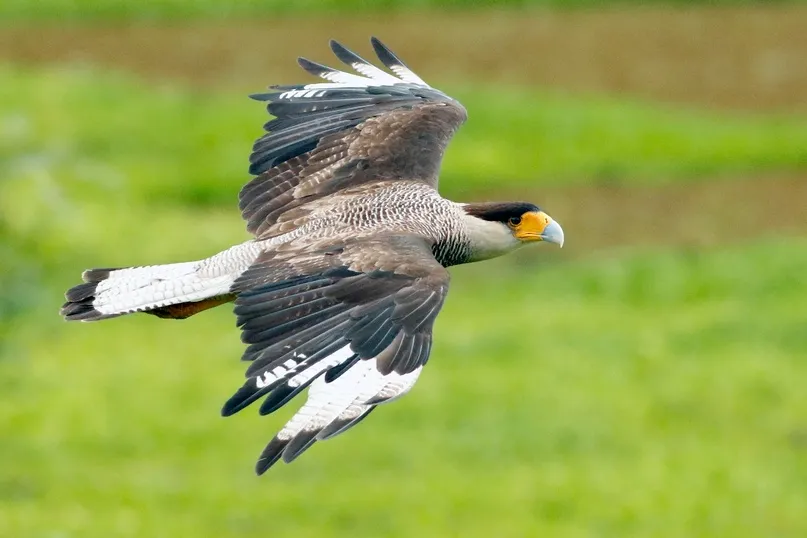
Raptors are more than mesmerizing to watch; they are pivotal to maintaining ecological harmony.
- Population Control: By preying on rodents and other small animals, raptors prevent overpopulation and disease.
- Scavenging Role: Vultures consume carrion, reducing the spread of harmful pathogens.
- Ecosystem Health Indicators: The presence of raptors signifies a balanced and thriving environment.
Their role as biodiversity guardians makes their conservation critical.
Mastering Raptor Watching: Tools and Resources
Tools for Success
- Binoculars: Choose models with 8x to 10x magnification for detailed observations (available on Amazon).
- Field Guides: Invest in region-specific guides like “Raptors of Texas” or “The Sibley Guide to Birds.”
- Birdwatching Apps: Apps like Merlin Bird ID offer real-time assistance and comprehensive data.
Join the Community
Engage with fellow enthusiasts through:
- Texas Ornithological Society
- Audubon Texas
- Online forums and social media groups
These platforms offer knowledge, camaraderie, and inspiration.
Overcoming Challenges in Identification
Identifying raptors is a skill honed over time, but some hurdles persist:
- Juvenile vs. Adult Birds: Young raptors often lack distinctive adult plumage, complicating identification.
- Similar Species: For example, sharp-shinned hawks and Cooper’s hawks appear nearly identical but differ in size and behavior.
- Seasonal Changes: Breeding and non-breeding plumage can further obscure a bird’s identity.
Practice and experience are your greatest allies in overcoming these challenges.
Conclusion: Your Texan Raptor Adventure Awaits
The skies over Texas are alive with the grandeur of raptors. From the iconic bald eagle’s majestic soar to the kestrel’s nimble hover, these birds capture the wild spirit of the state. By arming yourself with knowledge, tools, and patience, you can unravel the secrets of Texas’s birds of prey. So grab your binoculars, head outdoors, and let the skies tell their story. Every raptor sighting is a window into the untamed beauty of nature.
Read also: Hawks in Wisconsin: A Guide to Our Soaring Residents
FAQs
When is the best time to see raptors in Texas?
Spring and fall migrations offer peak opportunities.
Can I attract raptors to my yard?
Creating a bird-friendly environment may indirectly attract raptors by increasing prey availability.
What should I do if I encounter an injured raptor?
Contact wildlife rehabilitation experts; do not attempt to handle the bird.
Are there endangered raptors in Texas?
Yes, species like the aplomado falcon are endangered and require active conservation.
What’s the best way to differentiate hawks from falcons?
Hawks tend to soar with broad wings, while falcons exhibit sleek, rapid, and direct flight patterns.


